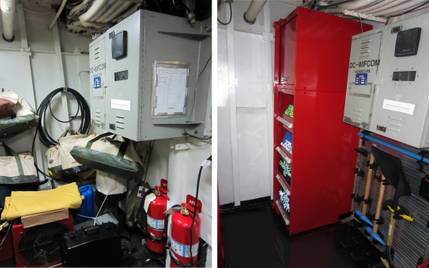Frontline Sees Strong Start to 2017
Crude tanker operator Frontline expects strong demand for its vessels at the start of 2017 and could benefit from oil producers' pact to cut output if it forces Asian buyers to go further afield for supplies, its chief executive said.
Spot rates for very large crude carriers (VLCCs) have doubled since October to around $70,000 per day, far above the level Frontline needs to earn a profit, as OPEC output hit a record in November and seasonal demand for oil kicked in.
"Our all-in break-even rate for VLCCs is below $22,000, so we're optimistic with regards to our own earnings," CEO Robert Hvide Macleod told Reuters.
Even though OPEC and non-OPEC producers agreed on Dec. 10 to curtail output by a combined 1.76 million barrels per day in a bid to ease a global glut that had sent oil prices tumbling, Frontline said this was unlikely to hurt its business.
While Saudi Arabia and other Gulf producers have promised to slash production, key countries to the tanker trade like Nigeria and Libya were exempt from the plan.
Chinese, Japanese, Indian and Korean refiners are seen buying more oil from north and west Africa to replace the shortfall in Gulf output, tying up ships on longer transport distances and reducing the overall supply of available tankers.
"Asia is the biggest buyer of crude, and the longer journeys make the impact (from OPEC's cuts) on tanker demand minor," Hvide Macleod said.
Frontline warned in its third-quarter earnings report on Nov. 29 it could experience periods of market weakness ahead, even as the balance between supply and demand was likely to improve.
"We still expect that, but 2017 seems to be off to a strong start," Hvide Macleod said.
He estimated an additional 50 VLCCs will be added to the global fleet of supertankers in 2017, but older vessels are also being converted to other uses, and some may be scrapped altogether.
On Dec. 9, Frontline raised $100 million in a share issue supported by its biggest shareholder, billionaire investor John Fredriksen who owns 48.4 percent, and said it would use the cash to expand its fleet of 73 vessels.
The share issue could also allow the firm to increase its borrowing.
"Our main focus will be on buying second-hand tonnage or vessels that have deliveries (from shipyards) soon, rather than placing new orders," Macleod said, adding that acquiring competitors was also an option.
He estimated the cost of buying a one-year-old VLCC at around $79 million, depending on specifications, and dropping by $2 million-3 million per year after that.
By comparison, ordering a new VLCC for delivery in 2018 could cost up to $85 million when all associated costs were included, Macleod predicted.
By Ole Petter Skonnord











